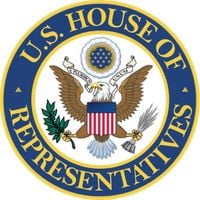On October 18, 2025, the Department of Homeland Security (DHS), under Secretary Kristi Noem, made headlines by purchasing two Gulfstream G700 luxury jets for top officials—a move that has ignited a firestorm of criticism, questions, and political sparring in Washington. The deal, valued between $172 million and $200 million depending on the source, comes at a time when the federal government is in the throes of a shutdown and the nation’s fiscal priorities are under intense scrutiny.
The new jets, marketed by Gulfstream as having “the most spacious cabin in the industry,” are intended to replace an aging aircraft that, according to a DHS spokesperson, is more than 20 years old and “well beyond operational usage hours for a corporate aircraft.” The spokesperson insisted that the purchase was a matter of safety, not luxury, but that explanation has done little to quiet the uproar.
Earlier this year, the United States Coast Guard (USCG) requested in its budget a single long-range Gulfstream V jet estimated at $50 million to replace an old jet used by Secretary Noem. As acting commandant of the Coast Guard Kevin Lunday explained in May, “The avionics are increasingly obsolete, the communications are increasingly unreliable and it’s in need of recapitalization, like much of the rest of the fleet.” He added, “A new aircraft was essential to provide agency leaders with secure, reliable, on-demand communications and movement to go forward, visit our operating forces, conducting the missions and then come back here to Washington and make sure we can work together to get them what they need.”
But the recent purchase far exceeds what was initially requested and budgeted, both in number and in price. Instead of a single replacement jet, DHS acquired two state-of-the-art G700s, each with a price tag that dwarfs earlier estimates. This abrupt shift has alarmed lawmakers on Capitol Hill, particularly Democrats who have accused Secretary Noem of putting personal comfort ahead of agency needs.
Representatives Rosa DeLauro of Connecticut, the senior Democrat on the Appropriations Committee, and Lauren Underwood of Illinois, the top Democrat overseeing the homeland security panel, sent a sharply worded letter to Noem demanding answers. According to The New York Times, the letter read, “In addition to raising serious questions about your ability to effectively lead an agency whose procurement strategies appear to vary on a whim, the procurement of new luxury jets for your use suggests that the U.S.C.G. has been directed to prioritize your own comfort above the U.S.C.G.’s operational needs, even during a government shutdown. We are deeply concerned about your judgment, leadership priorities, and responsibility as a steward of taxpayer dollars.”
The lawmakers’ letter, cited by multiple outlets including The New York Times and The Independent, requested detailed information by noon on October 30, 2025. Among other things, they asked for clarification on the funding source, reasons for the abrupt change in acquisition strategy, and operational requirements that justified the purchase. The letter also requested the names of all individuals who reviewed or approved the contract and asked whether any justification and approval documents supported the sole-source award to Gulfstream Aerospace Corporation.
“It has come to our attention that, in the midst of a government shutdown, the United States Coast Guard (USCG) entered into a sole source contract with Gulfstream Aerospace Corporation to procure two new G700 luxury jets to support travel for you and the Deputy Secretary, at a cost to the taxpayer of $200 million,” DeLauro and Underwood wrote. “Based on the Department’s public statement that you personally sign off on all DHS contracts that exceed $100,000 in value, and prior solicitations indicating that you are a primary user of these aircraft, we assume that you are involved in the approval of this contract.”
The controversy doesn’t end with the jets. Critics have pointed to a pattern in Secretary Noem’s spending habits, both during her tenure at DHS and as governor of South Dakota. The Sioux Falls Argus Leader reported in 2021 that Noem spent $68,000 in taxpayer money to redecorate the governor’s mansion. Earlier this year, the Associated Press highlighted that South Dakota taxpayers covered about $150,000 in Noem’s personal and political travel costs. These past expenditures have fueled accusations that Noem’s priorities are out of step with those of taxpayers and the agencies she leads.
Republicans, meanwhile, have defended the need for updated equipment. Earlier in 2025, they included about $25 billion in new funding for the Coast Guard, with $2.3 billion earmarked for “procurement and acquisition of rotary-wing aircraft.” Secretary Noem has stated that she was using some of those funds to ensure Coast Guard members did not miss a paycheck during the shutdown, according to The New York Times. However, the connection between those funds and the jet purchase remains unclear, and lawmakers are demanding a full accounting.
At the heart of the dispute is the question: was this purchase really about safety and operational readiness, or is it another example of government excess at a time of fiscal constraint? The letter from DeLauro and Underwood goes so far as to say, “It appears you are routinely prioritizing yourself and those closest to you over the needs of the USCG servicemembers who protect this nation.” They also called for the preservation of all documents related to the procurement, signaling the possibility of further Congressional oversight.
The DHS, for its part, has not provided detailed public answers to the questions swirling around the deal. The agency’s spokesperson continues to cite safety concerns and the obsolescence of the previous aircraft. Yet, as critics point out, the original request was for a single, less expensive jet, and the sudden escalation in both number and luxury level of the aircraft has not been explained to the satisfaction of Congressional overseers.
As the deadline for DHS’s response to Congressional inquiries approaches, the controversy shows no signs of abating. Lawmakers, watchdogs, and the public are left waiting for clarity on how—and why—such a significant expenditure was approved during a time of government austerity, and whether it truly serves the interests of national security or simply those of the department’s top brass.
The coming weeks may reveal more about the inner workings of federal procurement and the priorities of those entrusted with public funds. For now, the purchase of two luxury jets remains a potent symbol of the tensions between government leadership, fiscal responsibility, and public trust.

